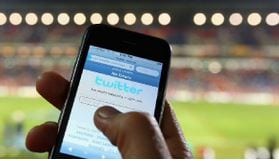by Alex Stewart – March 2014 #LOVEJU Juventus, la Vecchia Signora of Italian football, may be one of the most established brands in Italy, but she recently showed the sort of innovative approach to earned media that many newer, more agile brands could only sit back and admire. Using a multi-platform approach to social media,…Continue Reading #LoveJu: How Juventus & Jeep Partner to Target the Digital Fan
#LoveJu: How Juventus & Jeep Partner to Target the Digital Fan




